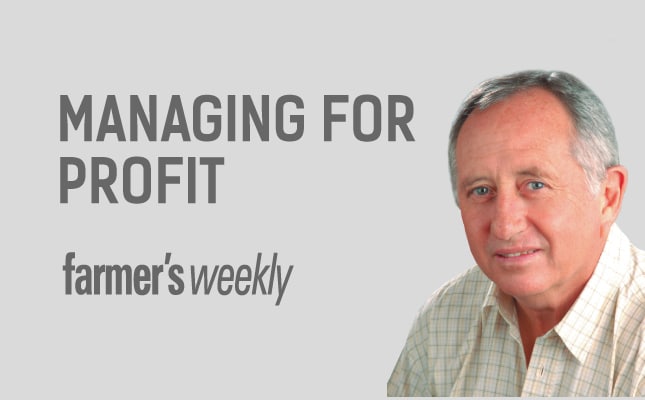
Ask local farmers what’s keeping them awake at night, and they’ll all give you the same answer: costs. They are not worrying needlessly; these have indeed put them in the danger zone. But I’m not referring to the danger of financial collapse due to huge cost increases, although that’s certainly a risk. I’m talking about the danger of becoming fixated on cost control at the exclusion of the other aspects of the business that need ongoing attention.
READ:Securing a market for your chickens
The hazard of having a ‘one-track mind’ hit me forcibly when I recently read The Three Rules by Michael Raynor and Mumtaz Ahmed. This is another of a growing list of business books that identify the characteristics common to highly successful companies. The difference, though, is that Raynor and Mumtaz, who have researched thousands of companies worldwide, have boiled it all down to just three simple rules for success:
- Rule 1 – Better before cheaper In other words, focus on quality rather than on price or cost of production.
- Rule 2 – Revenue before cost Increase revenue rather than reduce costs.
- Rule 3 – Change anything you must in order to follow Rules 1 and 2
If you’re selling products such as milk, maize, wool, cotton or sugarcane, it will obviously be more difficult to differentiate on quality than if you’re producing fruit, vegetables, eggs or chicken sold directly to retail outlets. But it can be done.
Quality
Every farm product you wish to name has quality differentiators that will make a significant difference to the buyer. Identify them, and meet the highest standard possible. Take packaging, for example. Even if there’s little room for creativity, there may be opportunity to be practical and useful. A cotton or wool bale filled to capacity, neatly sewn and clearly and accurately labelled, is so much easier to store and handle at the gin.
Of course, if you’re in the fruit and veg game, the sky is the limit when it comes to differentiated packaging. What about using reliability of supply as a differentiator? Ensure that your delivery truck always arrives on time for the allocated delivery slot and the agent or retailer will know he can count on you. While opportunities for differentiation in bulk non-branded goods may be limited, there are always ways to set yourself apart from your competitors.
Revenue
Rule 2 is the one that really got me thinking about increasing costs. Business success is never a function of how little you spend. It’s not even a function of how much turnover you generate. It’s the difference between the two that matters. Profit!
According to Raynor and Mumtaz, companies that prioritise on driving up revenue are the true successes. Becoming obsessively focused on costs kills creativity when it comes to generating revenue and profit. Don’t do it.
What opportunities have you overlooked in this area? What about the factor that affects the success of your farm more than any other – yield? How can you increase this? Have you, for example, explored the huge opportunities to apply ‘precision farming’? This means that instead of working your farm land by land, you start working it hectare by hectare or in even smaller units.
Consider other ideas
These techniques, which come at some cost (but, remember, that’s not our focus!) have led to huge yield increases where properly applied. You needn’t stop here, of course. What about exploiting opportunities on land you might not be fully utilising? Apart from other cropping options, what about entering the enormous and growing lifestyle market? City-dwellers in their droves are longing to escape to the country and enjoy its wide-open spaces, tranquillity and fresh air.
As for Rule 3 – what can we say? Just do it!
Contact Peter Hughes at [email protected]. Please state ‘Managing for profit’ in the subject line of your email.
This article was originally published in the 17 May 2013 issue of Farmer’s Weekly.







